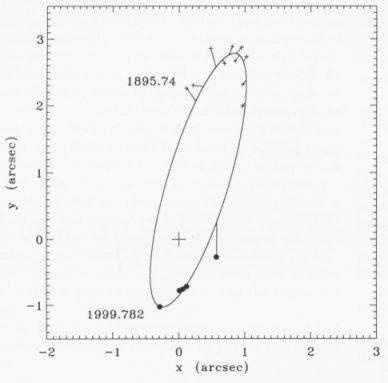
 |
Delta Velorum B traces a clockwise apparent relative orbit around more massive Delta Vel A (the bright naked-eye star), whose position is indicated by the cross. The axes are in seconds of arc. The orbit is tilted to the line of sight, that is, is not seen face on. In reality, both stars move in mutual orbits around a common center of mass, which is not located for this system. Delta Vel A is also double (an eclipsing binary), while far outside the image lurks another distant double that circulates around the pair shown here, making Delta Velorum a quintuple star. (From an article by R. W. Argyle, A. Alzner, and E. P. Horch, in Astronomy and Astrophysics, vol. 384, p. 171, 2002.) |